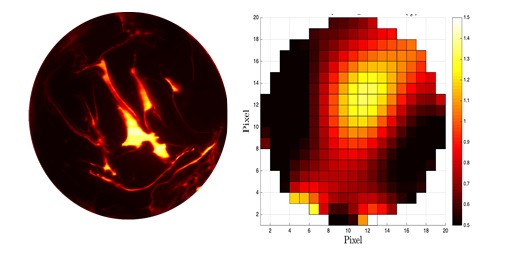The mixing and multiphase flow group carries out flow visualisation, mathematical modelling and CFD, focussed on the processing of complex and multiphase fluids.
The group has access to optical imaging techniques including Particle Image Velocimetry (PIV) and Planar Laser Induced Fluorescence (PLIF). Ghost Particle Velocimetry is also (a novel method of flow visualisation employing scattered light from nanoparticulate tracers.

Figure: Mixing of a viscous additive in pipe flow (a) using laser based diagnostic method (b) electrical tomography
The group links strongly to the Positron Imaging Centre in the School of Physics and Astronomy.
Major and long term projects include:
EPSRC Programme Grant MEMPHIS (Multiscale Examination of Multiphase Physics in Flows)
The project, in collaboration with Imperial College, explores the development of novel methods for imaging of multiphase flows, focussing on the complexity of interfacial motion during the rupture of liquid threads and jets to form drops in the presence of surfactants, and the impact of a dispersed phase upon continuous phase turbulence.
Others include:
- Mixing of complex fluids in tanks and static mixers (funded by EPSRC, Johnson Matthey, Unilever Port Sunlight)
- Interfacial phenomena and turbulence in batch and inline high shear mixing devices (funded by EPSRC & Unilever)
- Deactivation of catalysts and kinetic models (funded by Johnson Matthey)
- Predicting deposition in fluid systems within gas turbines and the impact of fuel formulation (funded by EPSRC & Rolls-Royce)
- Drop generation and interfacial phenomena in confined and unconfined flows in the presence of additives and surfactants, including microfluidics (EPSRC, Procter & Gamble)